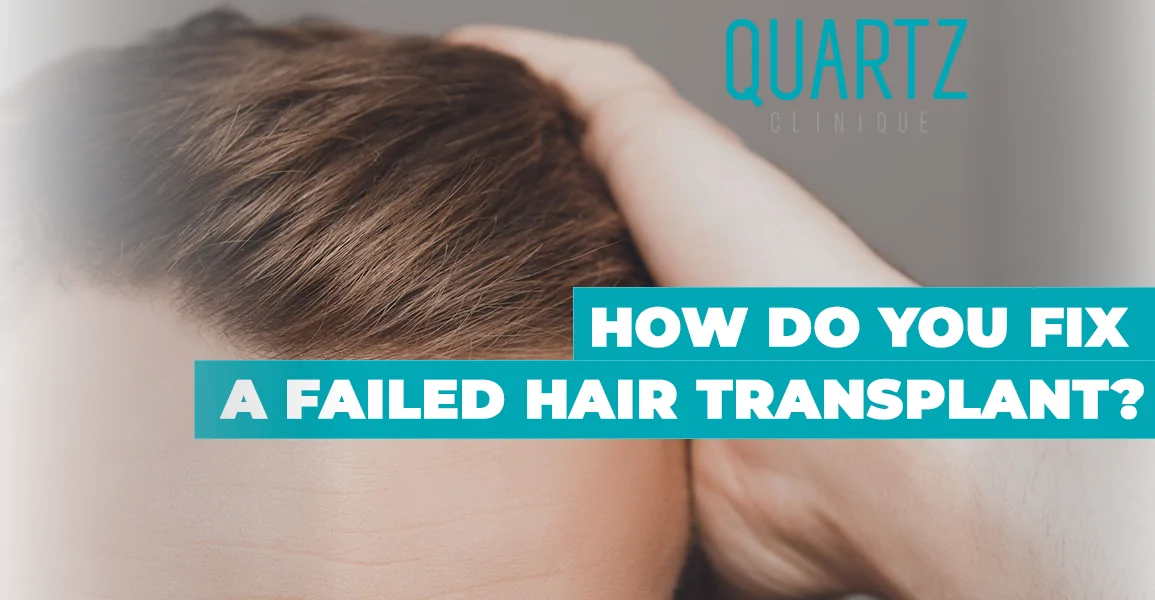Hair transplant correction, also called revision hair transplant, is a specialized procedure designed to repair unsuccessful or unnatural hair transplant results. When the first operation is performed by an inexperienced practitioner or in an unsterile environment, complications such as poor hairline design, patchy density, or visible scarring can occur. A corrective hair transplant aims to restore a natural, balanced, and aesthetic appearance using advanced surgical techniques under expert medical supervision.
What Is a Corrective Hair Transplant?
A corrective hair transplant is a secondary surgical procedure performed to fix the complications of a previous hair transplant. The goal is to address unnatural hairlines, incorrect growth direction, or poor density distribution. This procedure requires greater precision than the initial transplant because the scalp has already undergone one surgical intervention.
Modern revision methods—especially FUE (Follicular Unit Extraction) and DHI (Direct Hair Implantation)—allow surgeons to restore natural growth patterns with minimal trauma to the scalp.
Why Hair Transplants Fail
There are various reasons why a hair transplant might fail, which can be categorized into clinical, individual, and technical causes.
| Cause | Description |
|---|---|
| Clinical Causes | Improper graft extraction or storage in unsuitable solutions can lead to graft death or infection. Lack of sterilization in the clinical environment is another common cause. |
| Individual Causes | Neglecting post-operative care—such as scratching, sleeping face down, or skipping prescribed medications—can result in graft damage, infection, or poor healing. |
| Hormonal or Genetic Factors | Ongoing androgenic alopecia or genetic hair loss progression can reduce the density of both transplanted and native hair if not properly managed. |
How Is Hair Transplant Correction Performed?
A revision transplant begins with a comprehensive assessment of the previous surgery. The surgeon evaluates the donor area, scalp condition, and hairline to identify the main reason for failure.
The corrective process typically includes:
- Diagnosis and Planning: Identifying the root cause of failure (poor technique, inadequate graft survival, or design errors).
- Redesigning the Hairline: Creating an age-appropriate and natural front line in harmony with facial proportions.
- Extraction of Healthy Grafts: Using advanced FUE or DHI methods to harvest new follicles from the donor zone.
- Implantation: Precise placement of grafts between existing hairs to improve density and correct asymmetry.
- Aftercare: Postoperative medical care, PRP therapy, and follow-up sessions to enhance graft survival and stimulate growth.
When Is Revision Hair Transplant Necessary?
You may need a corrective procedure if you notice one or more of the following after your first transplant:
- Unnatural hairline or incorrect direction of growth
- Sparse or uneven density in the transplanted area
- Visible scars in the donor or recipient site
- Continued shedding of newly transplanted hair
- Artificial or pluggy appearance of hair clusters
In such cases, revision surgery helps refine and enhance the initial result for a more natural look.
Correcting an Unnatural Hairline
A poorly designed hairline is one of the most visible signs of an unsuccessful transplant. During correction, new grafts are implanted at specific angles and directions to ensure a soft, natural transition between the forehead and the hairline. The use of micro-implantation techniques allows the surgeon to blend the new grafts seamlessly with existing hair for a realistic result.
Is Expensive Always Better?
High cost does not always guarantee quality. The success of a hair transplant depends primarily on the surgeon’s expertise, medical training, and the clinic’s sterilization standards—not on the price tag. Patients should focus on qualifications, experience, and patient satisfaction when choosing a clinic rather than assuming that higher fees equal better outcomes.
What If My First Hair Transplant Failed?
If your initial procedure was unsuccessful, a revision hair transplant can correct the issues. However, it is crucial that your donor area still contains enough viable follicles. Previously transplanted grafts cannot be removed and reused, so careful donor management and a realistic plan are essential. In most cases, surgeons can place new grafts between existing hair strands for natural coverage.
Why Choose Quartz Hair Clinic Istanbul?
At Quartz Hair Clinic Istanbul, our experienced surgeons specialize in advanced hair transplant correction. Each patient undergoes a thorough evaluation, scalp analysis, and personalized planning to achieve optimal results.
We use state-of-the-art techniques such as FUE, DHI, and PRP-assisted therapy, ensuring a natural appearance and minimal downtime. Thousands of patients from around the world choose Quartz for successful, natural, and long-lasting results—at internationally competitive prices.
Frequently Asked Questions — Hair Transplant Correction (Revision)
1) Can a failed hair transplant be corrected?
Yes. Revision hair transplant procedures can restore density, adjust the hairline, and conceal scars using FUE or DHI techniques. Success depends on donor hair availability and scalp condition.
2) How long should I wait before getting revision surgery?
It is generally recommended to wait 9–12 months after your first procedure. This period allows full growth, scar maturation, and a more accurate evaluation of the previous results.
3) Why do hair transplants fail?
Common reasons include poor graft handling, inadequate sterilization, incorrect placement angles, low-density planning, or patient non-compliance with post-op care. Hormonal and genetic factors may also play a role.
4) Am I a good candidate for hair transplant correction?
You may qualify if you have unnatural hairlines, visible scarring, low density, or asymmetric growth after a previous transplant, and still possess sufficient donor hair for re-extraction.
5) Does a higher cost guarantee better results?
No. The most crucial factors are the surgeon’s experience, clinic hygiene, and use of modern technology—not the procedure price.

